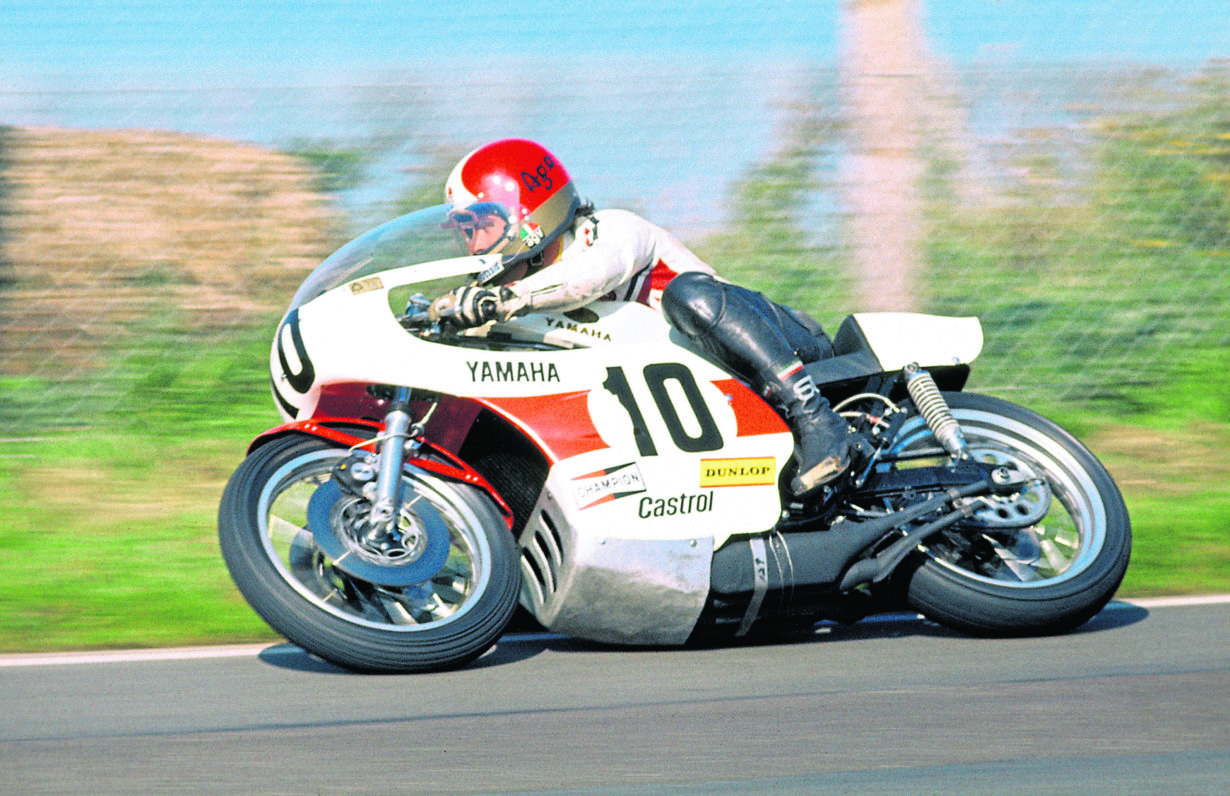Despite the changes made at both prototype and production levels it was now apparent to the Race Team its half-litre four was far from perfect. The OW20 was good but there was still a lot work needed if it was to win the 500 crown. A new bike, designated OW23, had been available midway through the 1974 season and, on paper at least, it offered substantial benefits. A full 21kg lighter than its predecessor, overall mass had been reduced by various means. The crankcases were now magnesium not aluminium, and both crankshafts and gear sets had been slimmed down, allowing the inline-four to be 20mm narrower and 30mm shorter – effectively mass centralisation a decade before Honda made it a ‘thing’. At Belgium Agostini found the OW23 to be slower than the outgoing model and following an off in Sweden the former champion ended up in hospital with a broken shoulder. Yamaha’s Tepi Lansivouri did his best but MV’s Phil Read took the championship.

During the closed season many detail changes were made to the OW23. It and the OW19 suffered from a dipsomaniacal thirst so changes to port timing/sizes and carburettor tuning were undertaken. The motors were notoriously peaky even with reed valves fitted, necessitating changes to internal gear ratios for various tracks. Previously changing the cogs had required a complete engine strip but the revised design saw a cassette unit adapted that only required removal of the clutch assembly in order to gain access. The resultant machine, now designated OW26, would carry the factory’s hopes for the 1975 season.
Of the nine races that season Agostini DNF’d three times – twice with engine seizures and once with a puncture. Against this, Read was riding the venerable MV harder than ever in order to make up for its ageing design which harked back some 20 years. If the OW19 had laid down a wording of impending two-stroke superiority, the OW26 sealed the fate of the MVs – just. The 1975 title came down to the final race of the season at the Czech GP where Agostini’s second place behind Read gave him the title by just eight points. Yamaha finally had its premier title!
Despite being World Champions, Yamaha almost parked up and rested on its laurels for the 1976 season while pondering what to do next. Ago’s OW23 was given an OW29 moniker and handed to Venezuelan Johnny Cecotto who had come up through the ranks. A lack of spares part-way through the season and Suzuki’s decision to make the RG500 square four available to privateers saw bike and rider marginalised. Agostini had gone back to MV Agusta, Suzuki’s star was in the ascendant, and people were wondering if all of Yamaha’s efforts had been little more than to prove a point. Was the 1975 title just a one-off or was Yamaha genuinely serious about continuing in premier class road racing?
By Steve Cooper, VLMC.
The VJMC – run by motorcyclists for motorcyclists. For membership enquiries only Tel: 01454 501310
Email: [email protected]
#classicbikeshows #motorcycle #motorbike #motorcyclelife #classicmotorcycle #classicbike #motorcycleclub #classicmotorcycles #motorbikelife #classicbikes #motorcycleevent #agostini #morebikes


